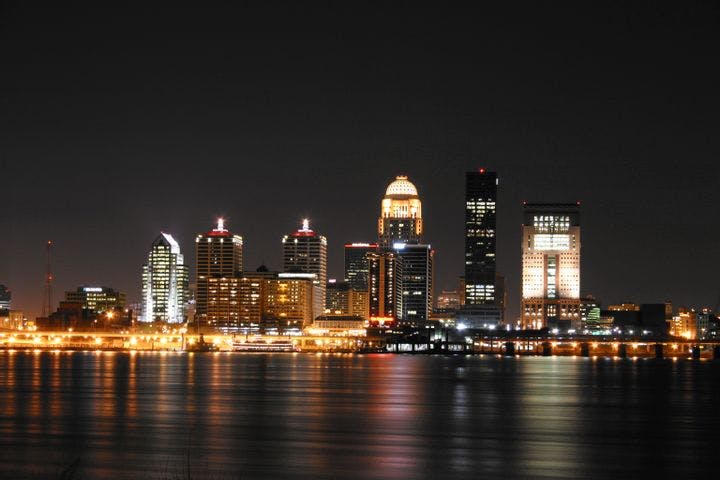Winter 2012
New Life for Old Cities
– Patrick Piuma
Across America, small and midsize cities, particularly those that traditionally have relied on manufacturing, are struggling to forge new identities in a globalized world gripped by recession.
Not long ago I caught sight of a bumper sticker that read “86-64” affixed to a bicycle parked outside Harvest, a popular new locavore restaurant in Louisville’s burgeoning arts district. One of Harvest’s founding partners is a Kentucky farmer and leader in the urban agriculture movement that is taking hold in this riverfront municipality of nearly 600,000 residents. The sticker referred to a controversial grassroots initiative to tear down an elevated section of Interstate 64 that separates the city from the Ohio River and replace it with a tree-lined boulevard and an expansion of Waterfront Park. It struck me that here was yet more proof that Louisville, an aging midsize industrial city, is undergoing a transformation.
Louisville isn't alone. Across America, small and midsize cities, particularly those that traditionally have relied on manufacturing, are struggling to forge new identities in a globalized world gripped by recession. Many are seeking to move toward a “green economy” that reduces reliance on fossil fuels and uses resources efficiently. In Small, Gritty, and Green, journalist and historian Catherine Tumber proposes that the undervalued assets of such cities—including their proximity to agricultural lands, skilled manufacturing work forces, and greater flexibility compared to their larger counterparts—poise them to capitalize on the green economy trend.
Tumber traveled the Midwest and the Northeast to interview people in more than two dozen Rust Belt cities that are often portrayed in the media as has-beens: Syracuse, New York; Peoria, Illinois; and Janesville, Wisconsin, to name a few. She presents a range of views—from the crusading talk of self-proclaimed “environmental Nazis” to the nuanced statements of public policy makers and the brutal assessments of skeptics. As a woman in a rural Illinois convenience store tells Tumber when asked about the wind turbines on the surrounding farmland, “We have to live with these ugly things, but the electricity goes to New York City. We have to live off coal.”
Tumber covers a lot of territory quickly, including the budding urban agriculture movement, cities’ efforts to foster “smart growth,” and the rise of green manufacturing. She cautions that midsize cities need to rein in suburban sprawl, which destroys the small farms and other agricultural land close to urban cores that give them an advantage over large metropolises. Cities that were hollowed out as a result of white flight, urban renewal, and other misfortunes are examining ways to put vacant and underutilized land to productive use, at least temporarily, through urban farming initiatives.
Some Rust Belt cities also have begun to retool their work forces and economic development goals to mesh with the emerging low-carbon practices of the green economy. I was surprised to learn that Muncie, Indiana, a town only a three-hour drive from my Louisville home, is becoming a major producer of wind turbine components. Proximity to a major wind corridor and a work force whose skills were honed manufacturing automobile transmissions place the city in a green technology sweet spot.
Of course, not every city is in a wind corridor or has the manufacturing base to create products that will be needed in a low-carbon economy. But Tumber is right that many small and midsize cities share a number of characteristics that could be the basis for an economic renaissance. Their futures depend on what they do with those assets. As Tumber suggests, the quality of a community’s education is one significant determinant. Residents of Louisville know about the challenges of engineering education policy all too well—in 2007, the U.S. Supreme Court struck down the city’s attempt to integrate its classrooms with race-based school assignments.
Small, Gritty, and Green offers inspiration and hope for older manufacturing cities that have been written off by the rest of the country as casualties of globalization. If cities like Louisville are able to adapt, their best years may be yet to come.
* * *
Patrick Piuma is the director of the Urban Design Studio at the University of Louisville.
Reviewed: "Small, Gritty, and Green: The Promise of America's Smaller Industrial Cities in a Low-Carbon World" by Catherine Tumber, MIT Press, 2011.
Photo courtesy of Flickr/The Pug Father
